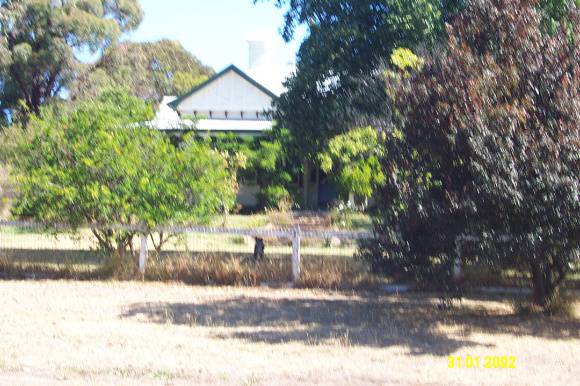| Back to search results » | Back to search page » |
|
UNITING CHURCH MANSE
Other NameMAYLANDS; PRESBYTERIAN CHURCH MANSE Location81 Church Street COLERAINE, Southern Grampians Shire
File Number508LevelStage 2 study complete |
|
Statement of Significance
What is significant? The Uniting Church Manse, formerly known as Maylands, at 81 Church Street, Coleraine is a single storey, symmetrical timber house with an encircling timber verandah. It is sited on a hill, facing northwards and overlooking the town. The house was built for the local chemist and later dentist, Robert S Poynter, whose family originated from Maylands in Essex. Poynter sold the house in 1925 after the premature death of his first wife, Iva, nee Cruthers. The house, opposite the present St Andrews Uniting Church, was purchased by the Presbyterian congregation to serve as a new manse. The house may have been designed by the leading Melbourne architects, Ussher and Kemp because of its architectural qualities, the fact that they were active in the area and the close friendship between Robert Poynter and the Winter-Cookes of Murndal where Ussher and Kemp had designed substantial extensions in 1906. The plan and form of the house are conventional for the time, although without the diagonal emphasis to be found in much domestic architecture from the Federation period. The stables and coach house are an important element of the complex. The house and outbuildings are in good condition and significantly intact although little remains of the original gardens other than the stucture and some major plantings. How is it significant? The Uniting Church Manse is of historical and architectural significance to the township of Coleraine and the Southern Grampians Shire. Why is it significant? The Uniting Church Manse is of historical significance for its association with the local chemist and dentist, Robert S Poynter, a leading member of the community and his first family, and subsequently as the manse associated with the adjacent St Andrews Church. The Uniting Church Manse is of architectural significance as a well planned and finely detailed example of Domestic Queen Anne design and, possibly, as the work of the important architects, Ussher and Kemp.
Group
Residential buildings (private)
Category
House




